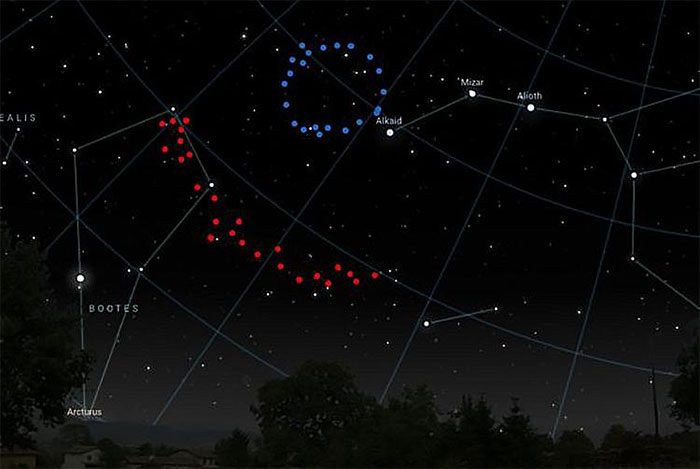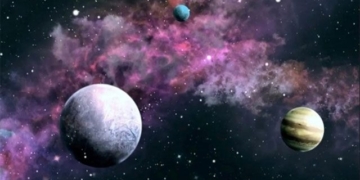A gigantic structure in a distant universe is challenging human understanding of how the universe evolves.
Located approximately 6.9 billion light-years away from Earth, astronomers have discovered a massive, nearly perfectly round galactic ring with a diameter of about 1.3 billion light-years.
The Great Ring is the name given to this structure by scientists. It does not align with any formations or mechanisms previously known to humanity.
This discovery was made by astronomer Alexia Lopez from the University of Central Lancashire and was presented at the 243rd meeting of the American Astronomical Society.
This is the second gigantic structure discovered by Lopez and her colleagues. The first Great Ring, known as the Giant Great Ring, is located in the same section of the sky as the Second Great Ring.

Two gigantic structures identified from Earth.
When the discovery of the first Great Ring was announced in 2021, it left astronomers bewildered. The presence of the Great Ring only deepens the mysteries of the universe.
Both of these enormous circular structures are not easily explained by our current understanding of the universe.
They are extremely large, uniquely shaped, and their cosmic proximity certainly indicates something significant to humanity. However, what that is remains uncertain for scientists.
The most direct connection appears to be with what is called Baryon Acoustic Oscillations (BAO). These are gigantic circular galaxies found throughout space.
They are essentially spheres, fossils of sound waves that propagated in the early Universe and then became frozen as space expanded to the point where sound waves could no longer travel.
The Great Ring is not BAO. BAO typically has a fixed size with a diameter of about 1 billion light-years. A close examination of the Great Rings shows that they have a shape resembling a bottle cap aligned to look like a ring!

Astronomers calculate the current theoretical size limit of structures to be 1.2 billion light-years; however, both of these structures exceed that size significantly.
But size is just one of the issues. The other concerns its implications for the field of cosmic evolution research.
One possibility is that these structures represent a type of topological defect in the spacetime fabric known as cosmic strings.
They are thought to resemble wrinkles that are proton-width appearing in the early Universe when spacetime was stretched and then frozen in place. While we have not found much physical evidence for cosmic strings, the theoretical evidence is quite promising.
Currently, no one knows for sure what the Great Rings signify. They could merely be a random arrangement of rotating galaxies in space, although the likelihood of that seems quite small.
The best hope is to discover more such galaxy arrangements scattered throughout the universe, from which we can derive their common characteristics.





















































